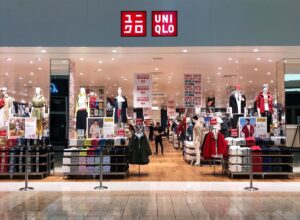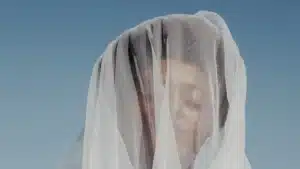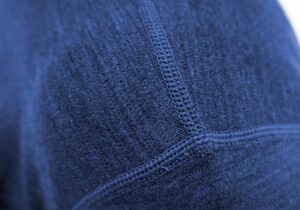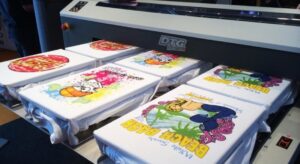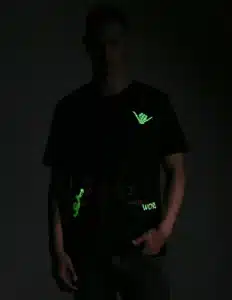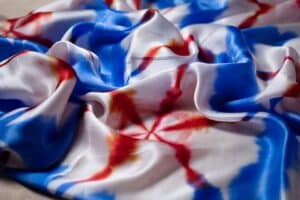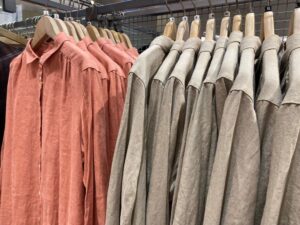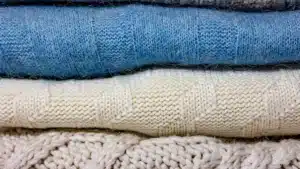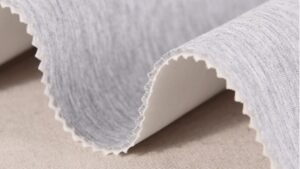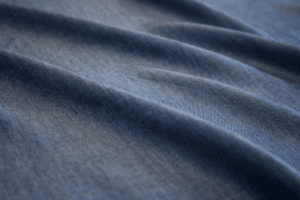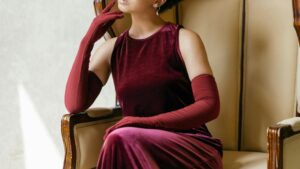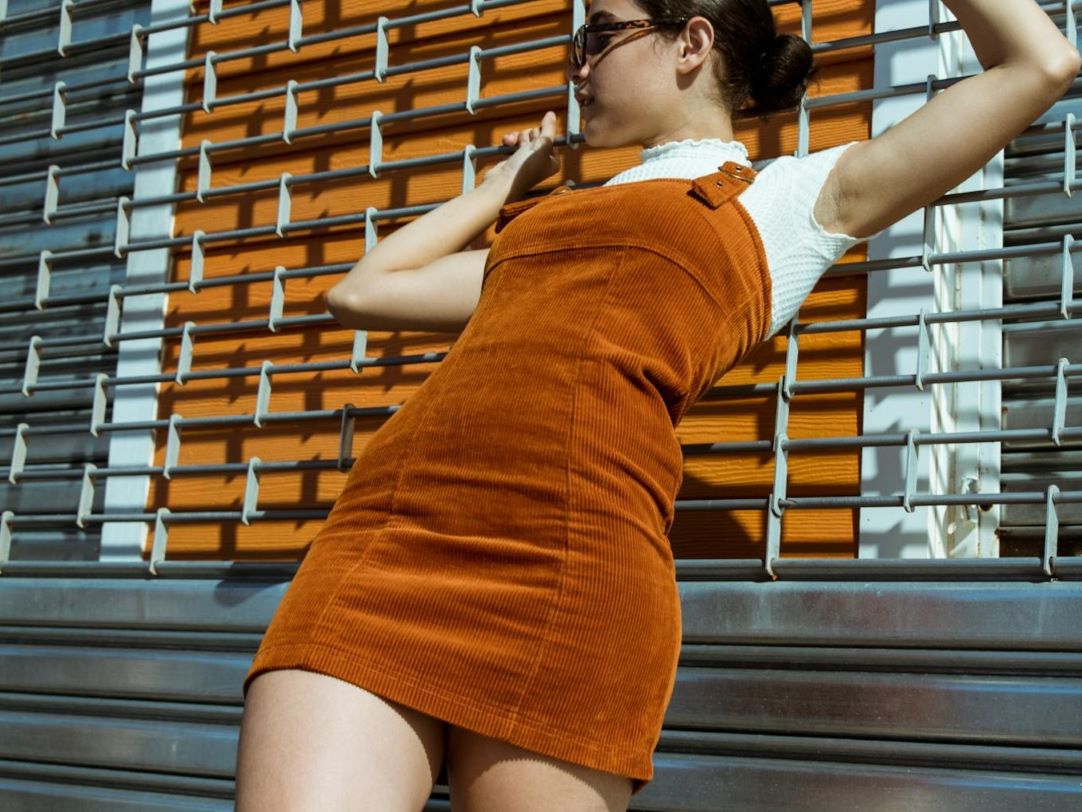
Corduroy fabric is known for its ridged surface and texture. It is both strong and stylish. The ridges, called wales, are made by cutting yarn loops. This design makes the fabric look nice and stay strong. Corduroy is often made from cotton or mixed fibers. It feels soft and lets air pass through easily. People use it for clothes and home items. It is great for jackets, cushions, and more. In 2023, the corduroy market was worth $1.5 billion. By 2032, it may grow to $2.4 billion.
Key Takeaways
Corduroy fabric has raised lines called wales that add strength and style.
This fabric can be used for clothes, furniture, and accessories.
Corduroy is strong and soft, perfect for daily outfits and home items.
Picking eco-friendly corduroy, like organic or recycled kinds, helps the planet.
Taking care of it with gentle washing and good storage keeps it looking nice.
What Is Corduroy Fabric?
Definition and Key Characteristics
Corduroy fabric is easy to spot because of its ridges. These raised lines, called wales, run in straight rows. The wales make corduroy look unique and feel strong. It is usually made from cotton but can include polyester or spandex for stretch.
Corduroy is very useful and works for many things. It is soft but tough enough for daily use. The fabric lets air pass through, so it’s comfy in any season. Whether it’s a jacket or a chair cover, corduroy feels both cozy and durable.
There are different kinds of corduroy, each with special features. Standard corduroy has medium-sized ridges with 11 wales per inch. Pinwale corduroy has thinner ridges, with 16 to 23 wales per inch, making it good for finer clothes. Elephant corduroy has wide ridges, from 1.5 to 6 wales per inch, giving it a soft, rich feel. Below is a table showing some common types of corduroy:
Type of Corduroy | Wale Count (wales per inch) | Description |
|---|---|---|
Standard Corduroy | 11 | Medium ridges, strong, stylish. |
Elephant Corduroy | 1.5 to 6 | Wide ridges, soft and fancy. |
Pinwale Corduroy | 16 to 23 | Thin ridges, smooth and delicate. |
Pigment-dyed Corduroy | N/A | Faded look, vintage style. |
Spandex Corduroy | N/A | Stretchy with classic texture. |
Bedford Cord | 3 to 5 | Thick ridges, bold texture. |
These options make corduroy great for many uses, like jackets or pants.
How Corduroy Differs from Other Fabrics
Corduroy is different from other fabrics because of its ridges. Unlike smooth fabrics like silk, corduroy has a bumpy surface. These ridges make it look interesting and last longer. It doesn’t wear out as fast as other materials.
The way corduroy is made also sets it apart. Extra fibers are woven into the fabric to make loops. These loops are cut to form the ridges. This process makes corduroy stronger and softer than flat fabrics like denim.
Corduroy is also very flexible. Wool is mostly for winter, but corduroy works all year. Its texture makes it good for casual or fancy outfits. You can wear it to a party or just relax at home. It’s stylish and useful.
Corduroy’s history makes it even more special. It started in ancient Egypt with similar ridged fabrics. Over time, it became the strong and fashionable material we use today. Its long history and unique features make corduroy a classic choice for clothes and décor.
How Is Corduroy Fabric Made?
The Production Process
Making corduroy fabric is a detailed and interesting process. It starts with a strong base fabric, usually woven in plain or twill patterns. This base gives the fabric its strength and structure. Here’s how it’s made step by step:
Weaving the Base Fabric: Threads are stretched tightly on a loom. Other threads are woven over and under them to form the base.
Adding Pile Threads: Extra threads, called pile threads, are added. These threads float over some base threads, creating small loops on the surface.
Cutting the Loops: The loops are carefully cut after weaving. This creates the soft ridges, called wales, that make corduroy special. The size of the wales depends on how the loops are made.
Finishing Touches: Machines ensure the ridges are even. The fabric is brushed, dyed, and treated to make it soft and long-lasting.
Modern machines can make up to 100 meters of corduroy in an hour. This makes it easy to produce for many uses.
Materials Used in Corduroy Manufacturing
The materials used to make corduroy affect its quality and feel.
Cotton: The main material, making the fabric breathable and comfy.
Cotton-Polyester Blends: These blends make it tougher and less likely to wrinkle.
Wool: Not common but great for warm winter clothes.
Synthetic Fibers: Materials like spandex make stretchy corduroy, good for fitted outfits.
Each material adds something special to corduroy. Whether you need a soft jacket or tough pants, the right mix of materials makes the fabric work for you.
Tip: Always check the label when buying corduroy. It helps you pick the best fabric for your needs.
Different Types of Corduroy Fabric
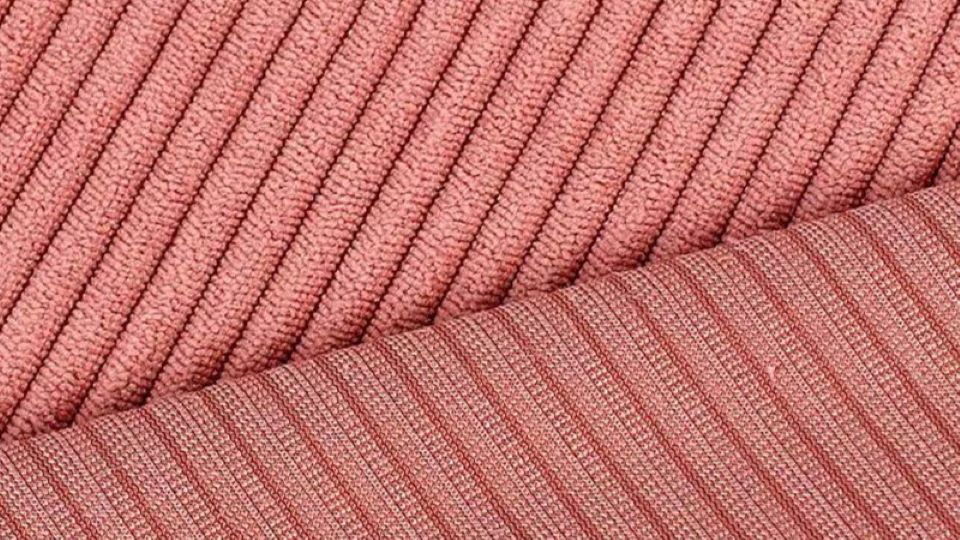
Corduroy comes in many styles, each with special uses. Here are three popular types: Wide-Wale Corduroy, Pinwale Corduroy, and Stretch Corduroy.
Wide-Wale Corduroy

Wide-wale corduroy has thick, bold ridges called wales. These ridges are fewer and larger than other types. The wale count usually ranges from 1.5 to 21 per inch. The most common ones have 8 to 12 wales. This fabric is very strong, making it great for pants, jackets, and furniture covers.
Wide-wale corduroy is tough and lasts a long time. High-quality versions can handle 20,000 double rubs. This means they resist wear and stay strong even after heavy use. Its durability makes it perfect for items that get used a lot.
Characteristic/Statistic | Description |
|---|---|
Wale Count | Number of ridges per inch; fewer ridges mean thicker wales. |
Typical Wale Count Range | Usually between 1.5 to 21 wales per inch; 8 to 12 is common. |
Durability | Strong fabric; lower wale count looks better on pants. |
Double-Rub Rating | High-quality fabric can handle 20,000 rubs, showing great strength. |
Double-Rubbing Definition | A test to see how well fabric resists rubbing and wear. |
Wide-wale corduroy’s bold look adds style to clothes and home décor.
Pinwale Corduroy

Pinwale corduroy has thin ridges, giving it a smooth and soft feel. It has 16 to 23 wales per inch, making it great for light clothes like shirts, dresses, and kids’ outfits. Its gentle texture feels nice on the skin, so it’s comfy for daily wear.
This fabric works for both casual and fancy outfits. Its neat look makes it a favorite for tailored clothing. If you want something elegant and cozy, pinwale corduroy is a great pick.
Stretch Corduroy
Stretch corduroy mixes the classic ridged look with flexibility. It’s made by blending cotton with stretchy fibers like spandex. This makes the fabric move with you, which is perfect for skinny pants, leggings, and fitted jackets.
The stretch feature adds comfort but keeps the fabric strong. Stretch corduroy holds its shape even after many uses. It’s a good choice for people who want stylish and comfy clothes. If you need fabric that’s flexible and durable, stretch corduroy is a smart option.
Tip: Think about the wale count and material blend when picking corduroy. This helps you find the best type for your needs.
Printed Corduroy
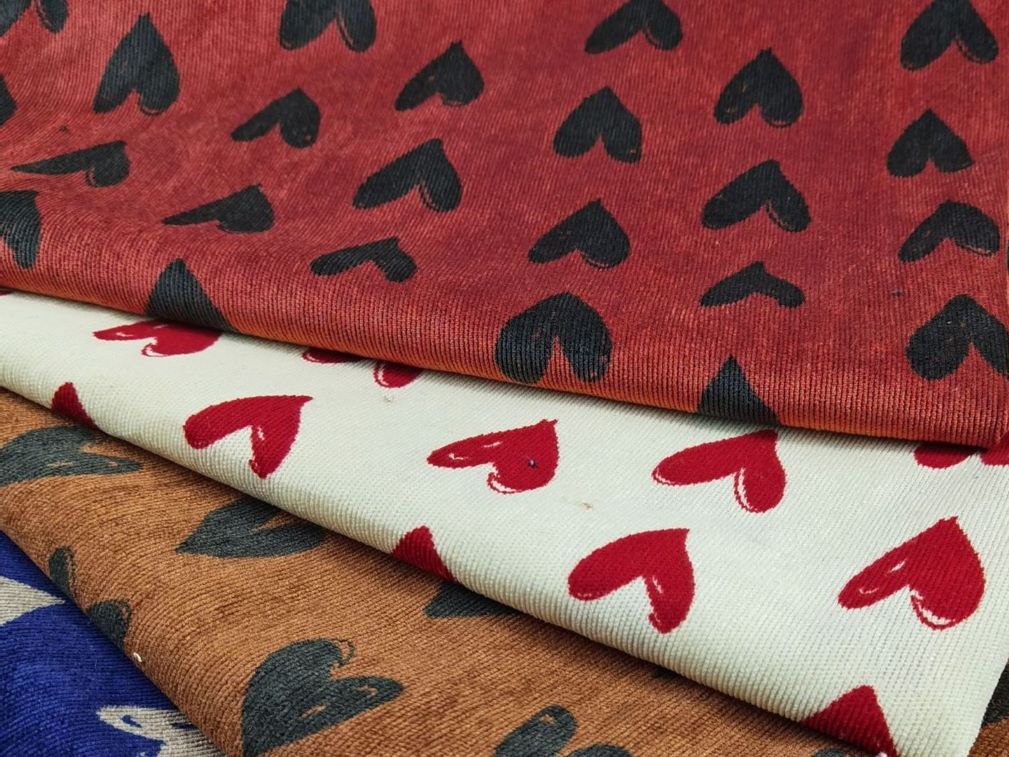
Printed corduroy mixes its ridged texture with fun patterns. This fabric is special because designs are printed on its surface. You’ll see floral, geometric, or abstract prints, making it great for stylish clothes or home décor.
Designs are added after the corduroy is woven and finished. The prints stick well to the ridges, creating a bold and colorful look. Even with the patterns, the fabric stays soft and strong like regular corduroy.
Printed corduroy can be used in many ways. It’s perfect for jackets, skirts, or pants that stand out. It also works for home items like pillows, curtains, or furniture covers. The mix of texture and prints makes it useful for fashion and decorating.
When picking printed corduroy, think about the wale count and design. Small wales suit detailed prints, while big wales match simple patterns. This fabric lets you be creative while staying comfy and durable.
Tip: Wash printed corduroy gently and avoid strong soaps. This keeps the texture and prints looking new.
Printed corduroy shows how versatile this fabric can be. Its mix of ridges and bright designs makes it a great choice for unique clothes or home décor.
Benefits of Corduroy (Durability, Comfort, Versatility)
Corduroy fabric has many advantages for clothes and home décor. Its strength, softness, and flexibility make it stand out from other fabrics.
Durability
Corduroy is very strong and lasts a long time. It’s great for jackets, pants, and other items used often. The ridges in corduroy add extra toughness. This helps it keep its shape and quality even with heavy use. Whether hiking in corduroy pants or using a corduroy chair cover, it stays in good condition.
Comfort
Corduroy feels soft and cozy to the touch. Shirts made from corduroy are both stylish and comfortable. The fabric allows air to flow, so it feels good in any weather. This makes it perfect for places with changing temperatures. You can enjoy wearing corduroy at home or on casual outings.
Versatility
Corduroy is very flexible and works for many occasions. You can dress it casually with jeans or formally with slacks. It’s also great for home décor, like cushions or curtains, adding warmth and style to rooms. Its ability to fit different needs makes it very popular.
Note: Corduroy is great, but it needs proper care. Its ridges may need extra attention when cleaning.
Corduroy combines strength, comfort, and flexibility, making it a smart choice for everyday use.
Common Applications (Clothing, Upholstery, Accessories)
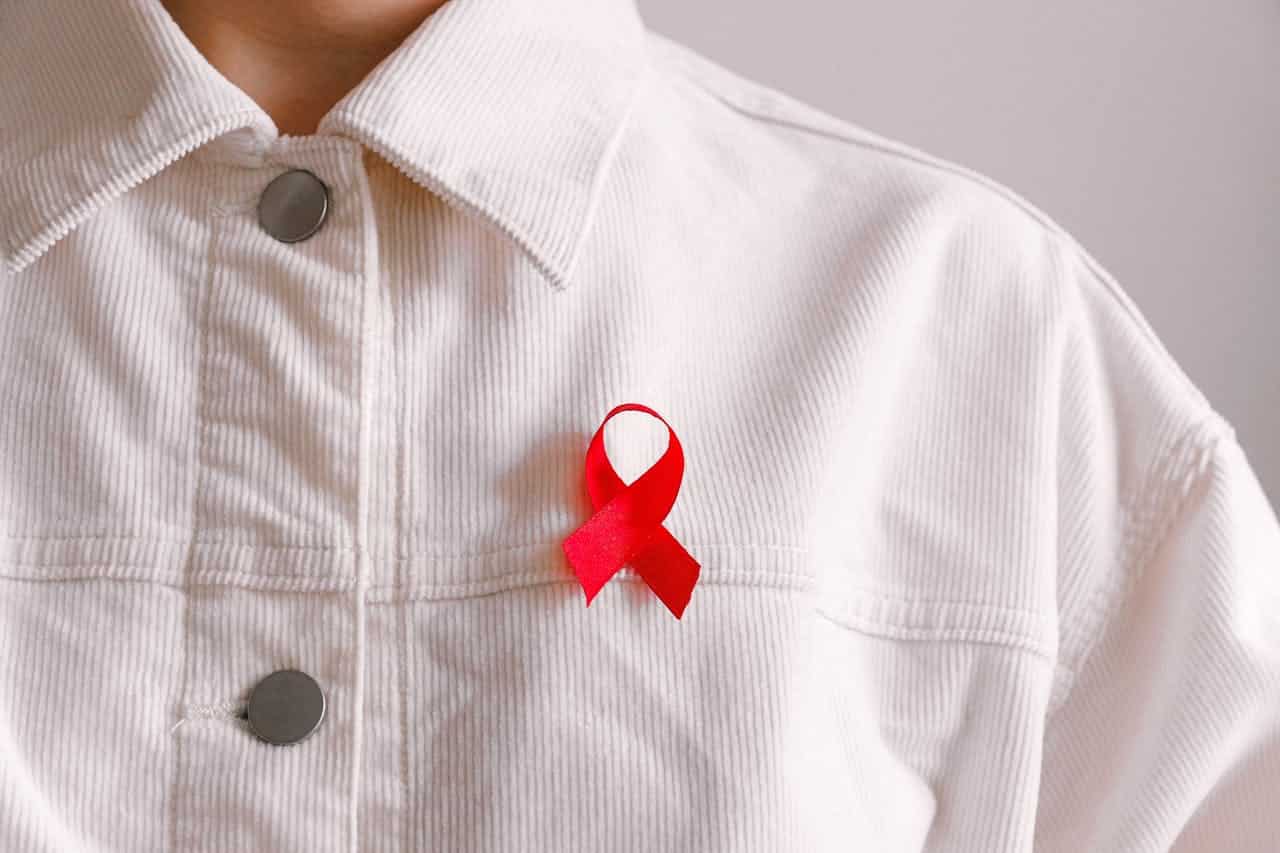
Corduroy is a fabric with many uses. Its strength, softness, and ridged texture make it great for fashion and home décor. Let’s explore how corduroy is commonly used.
Clothing
Corduroy is loved for making comfy and stylish clothes. It’s often used in pants, jackets, and skirts. The ridges give outfits a cool and classic look. In colder weather, corduroy shirts and pants keep you warm without being heavy. Stretch corduroy is perfect for tight clothes like skinny jeans or leggings. It’s flexible and strong. Whether dressing up or staying casual, corduroy clothes are cozy and fashionable.
Upholstery
Corduroy is a top pick for furniture covers. Its soft feel and tough build make it great for sofas, chairs, and cushions. Wide-wale corduroy is best for furniture because it lasts long and looks bold. Printed corduroy adds color and fun to pillows or curtains. It’s a great way to brighten up your home while staying durable.

Accessories
Corduroy is also used for accessories like bags, hats, and shoes. These items are strong and stylish. The fabric’s texture makes them stand out. Small items like wallets or headbands made from corduroy add a vintage touch to your style. They’re both practical and unique.
Tip: Pick the right wale count for your needs. Thick wales are good for furniture, while thin wales work better for clothes and small items.
From clothing to home décor, corduroy is versatile and timeless. Whether you need stylish outfits, sturdy furniture covers, or cool accessories, corduroy has you covered.
Caring for Corduroy Fabric
Taking care of corduroy fabric helps it last longer and look good. Follow these easy steps to keep it soft and textured.
Washing and Drying Tips
Wash corduroy gently to protect its ridges. Treat stains first with a stain remover, especially on cuffs or collars. Turn the item inside out before washing to protect the surface. Wash it in cold water with similar colors using mild detergent. Avoid washing with linty items like towels.
Dry corduroy on low heat or hang it to air dry. Low heat prevents wrinkles and keeps the fabric safe. If it looks wrinkled, use a steamer to smooth it out. Don’t iron directly on the ridges, as it can flatten them.
Tip: Always read the care label for specific washing instructions.
Storing and Maintaining Corduroy
Store corduroy properly to keep it in great shape. Clean it before storing to avoid stains setting in. Hang jackets or shirts on padded hangers to keep their shape. Fold other items and store them in breathable containers to avoid moisture.
Don’t stack heavy things on corduroy, as it can flatten the ridges. Use a soft brush to fluff up flattened ridges. Steaming can also freshen the fabric between uses.
Note: Gentle care and proper storage help keep corduroy looking its best.
By following these tips, your corduroy items will stay stylish and comfy for a long time.
Is Corduroy Fabric Sustainable?
Environmental Impact of Corduroy Production
Making corduroy affects the environment in good and bad ways. Most corduroy is made from cotton, which needs a lot of water and land to grow. Cotton farming often uses chemicals that can harm soil and water. Adding synthetic fibers like polyester or spandex makes it worse. These fibers come from oil, which is not renewable, and they take ages to break down.
The process of making corduroy also causes pollution. Dyeing the fabric uses chemicals that can dirty water if not managed well. Factories that make corduroy use energy, adding to air pollution. Some companies now use cleaner methods to lower their impact. Choosing brands that care about the planet can help reduce harm from corduroy production.
Sustainable Alternatives and Practices
You can pick eco-friendly options when buying corduroy. Organic cotton corduroy is grown without harmful chemicals, making it better for the earth. Recycled corduroy is another smart choice. It uses old fabric scraps, saving resources and reducing waste.
Support brands that care about the environment. Many now use safer dyes and energy-saving machines. These steps help cut pollution and save resources. Taking care of your corduroy items also helps. Fix small rips or turn old clothes into something new to avoid waste.
By making thoughtful choices, you can enjoy corduroy and help the planet. Small actions, like picking eco-friendly options, can make a big difference over time.
Corduroy fabric is strong, soft, and very useful. Its ridged surface makes it stylish and great for clothes or home items. Corduroy keeps you comfy and lasts long, whether it’s a jacket for fall or cushions for your home.
This fabric stays popular because it looks good and works well. Picking eco-friendly corduroy, like organic or recycled types, helps the planet. Corduroy gives you style, comfort, and a chance to make responsible choices.
FAQ
What makes corduroy different from velvet?
Corduroy has raised lines called ridges, giving it a bumpy feel. Velvet is smooth and soft with a shiny look. Corduroy is tougher and better for daily wear. Velvet is often used for fancy or formal items because of its luxurious finish.
Can you wear corduroy in warm weather?
Yes, you can! Lightweight cotton corduroy lets air move through, keeping you cool. Pinwale corduroy, with its small ridges, is great for hot days. Pick light colors for a fresh and summer-ready style.
Does corduroy shrink after washing?
Corduroy might shrink if washed in hot water or dried on high heat. To prevent this, wash it in cold water and let it air dry or use low heat. Always read the care label to keep its size and texture intact.
How do you remove wrinkles from corduroy?
Use a steamer to smooth out wrinkles without ruining the ridges. If you don’t have a steamer, hang it in a steamy bathroom. Avoid ironing directly on corduroy, as it can flatten the ridges.
Is corduroy suitable for kids’ clothing?
Yes, it is! Corduroy is soft, strong, and easy to clean, making it great for kids. Pinwale corduroy is lightweight and perfect for children’s clothes. It’s a smart choice for active kids who need comfy and durable outfits.

